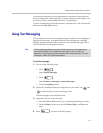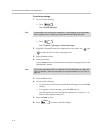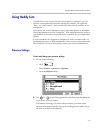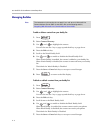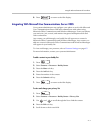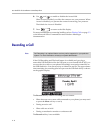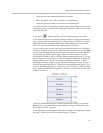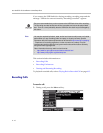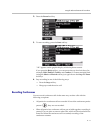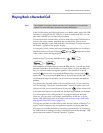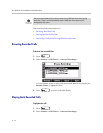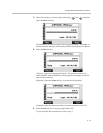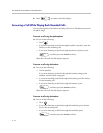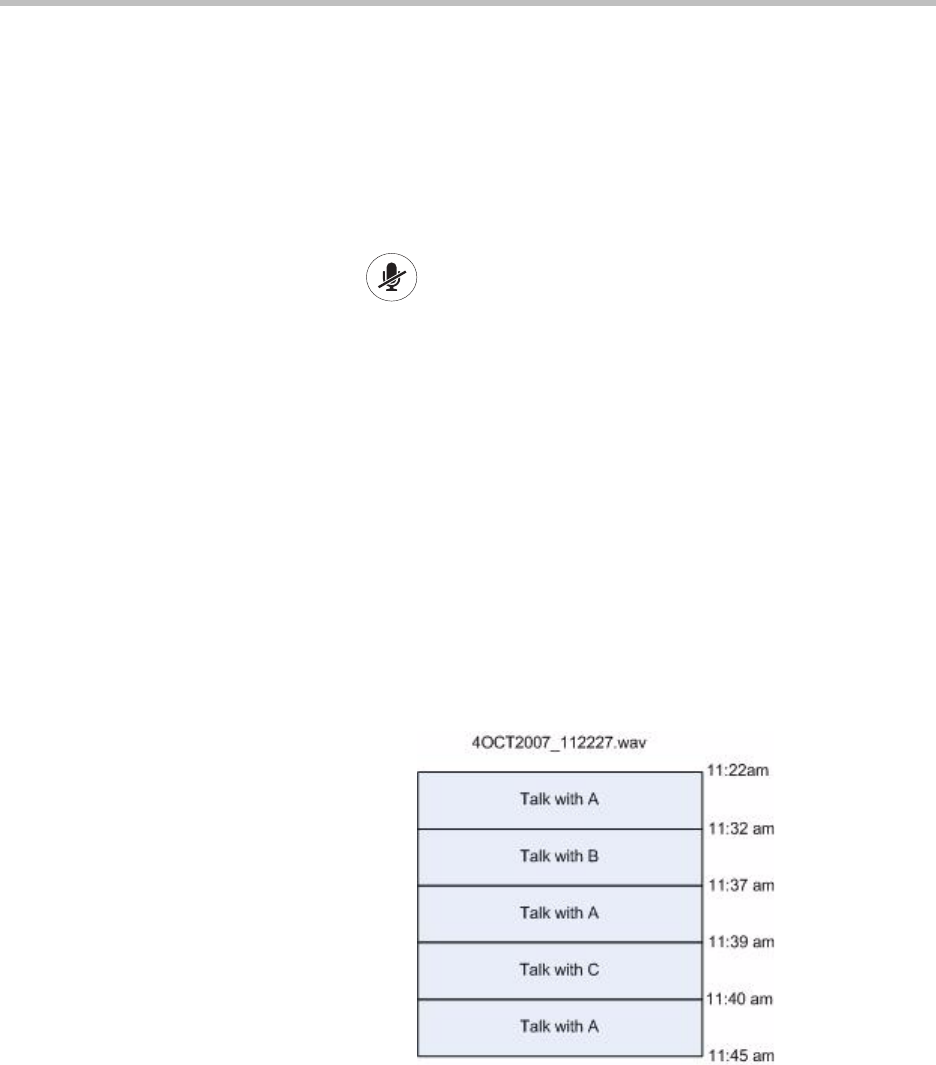
Using the Advanced Features of Your Phone
4 - 9
• When there are no connected calls on your phone
• When you place a new call (to transfer or to conference)
• When the phone prompts you to answer an incoming call
If you put an active call on hold, recording pauses. Recording continues if the
called party puts you on hold. Recording stops if all active calls end, no matter
who ends the calls.
If you press while recording, only the called parties are recorded.
Tones and indications (for example, dialing of digits or ringing from another
party’s phone) that occur before a call connects are not recorded. Local tones
and indications (for example, DTMF tones when dialing) are not recorded.
However, tones from another party’s phone may be recorded.
You can start, pause, resume, and stop recording through the use of soft keys.
All active calls that occur on your phone between the time you press the Start
soft key and the Stop soft key are recorded, alternating in the same .wav file.
For example, you place a call to party A and, after they answer, you start
recording on October 4, 2007 at 11:22am. While speaking with party A, you get
an incoming call. You put party A on hold and speak with party B. When you
finish speaking with party B, you return to speaking with party A. While
speaking with party A again, you get another incoming call. You put party A
on hold and speak with party C. When you finish speaking with party C, you
return to speaking with party A. You end your call with party A and recording
stops. Your conversations with parties A, B, and C are all recorded in the same
.wav file as follows:
If there is insufficient free space on the USB flash drive when you press the
Start soft key, recording does not start and the message “USB device is full.
Recording cancelled.” appears.
If the USB flash drive becomes full during recording, recording stops and the
message “USB device is full. Recording stopped.” appears.





